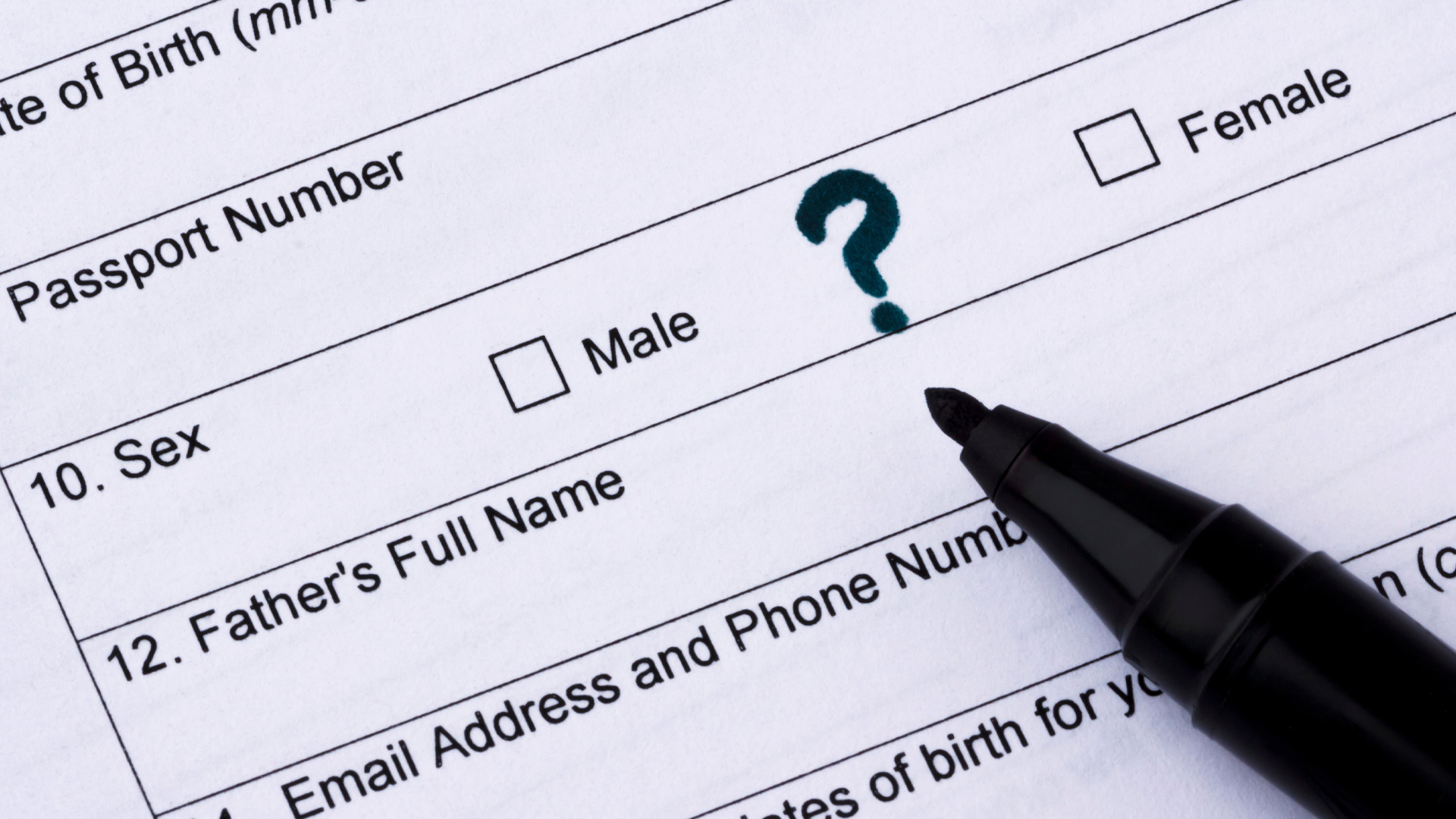
Why do we have gender markers? Are they necessary? These questions have been brought to the fore as transgender communities in Quebec organize in opposition to a proposed law that would out as trans anyone who has not had or does not wish to have genital surgery. Communities have, understandably, concentrated their efforts on improving gender markers rather than abandoning them – a crisis is not the time to reinvent the wheel. Yet it seems that abolishing gender markers would also provide a viable solution.
Gender markers are back in public discussion after the Quebec government proposed a new bill that would, among other things, create a “gender identity” marker distinct from a person’s “sex.” Whereas since 2015 the designation of sex on birth certificates can be changed based on self-identification, undergoing genital surgery would be required going forward. Bill 2 has been decried by trans communities, non-profit organizations and legal experts for violating trans people’s rights to dignity, privacy, equality and bodily integrity. Under the proposed law, trans people would be the only ones with “gender identity” on their government documents instead of “sex,” revealing their transness for all to see. The bill would also create a new “indeterminate” marker reserved for intersex newborns, further encouraging harmful and non-consensual surgeries. Public hearings on the proposed law are set to begin Nov. 30.
It was on QUB radio that I was first asked why, given the dangers of Quebec’s controversial Bill 2 for trans communities, we simply didn’t do away with gender markers. I was taken aback. Questions as to the raison d’être of gender markers are common among trans communities. I have previously argued in a scholarly context that we should abandon them. However, I rarely see that position among mainstream journalists, who often presume – along with the general population –that a gender marker is simply something we must have on identification documents.
Gender markers herald from a time when gender served as a basis for allocating rights. In Quebec, they have featured on birth certificates since before the adoption of the Civil Code of Lower Canada in 1866, following French custom. The history of gender markers in France is hardly progressive. As law professors Philippe Guez and Diane Roman explain, their primary use was in allocating lesser rights to women, discouraging draft-dodging and preventing same-sex marriages. Including gender on birth certificates played a similar role as registering race on them: it is the fuel needed by oppressive institutions to operate. Without a government-sanctioned record of gender, women could open bank accounts and marry one another by dressing up as men. Men could evade the draft. Trans people could stymie crossdressing charges. In a society that withholds rights from women and LGBTQ+ communities, recording gender becomes essential – without it, enforcing sexist, homophobic and transphobic laws becomes much more difficult.
On a more insidious level, gender markers also help naturalize social categorizations based on gender. If it is important enough to feature on birth certificates, the logic goes, treating people differently based on gender must be reasonable. Thus, sexism is reinforced. Thankfully, none of those justifications hold up today. Women and LGBTQ+ communities, at least on paper, have rights equal to everyone else.
A few arguments have been raised in favour of preserving gender markers.
One such argument is that gender-segregated spaces and programs – be they bathrooms, shelters or affirmative-action initiatives – continue to exist, and depend for their existence on gender markers. Yet the argument gravely misunderstands the state of the law. In Canada, access to gender-segregated spaces and programs has been based on gender identity rather than gender markers for more than 20 years. Preserving gender markers only fuels the misconception that trans inclusion is based on the government’s stamp of approval.
A second argument for preserving gender markers is their use for the purposes of identification. Gender markers are sometimes used to identify the person, especially when pictures are unavailable. However, use of gender as a proxy for individual identity is rendered fraught by the many gender non-conforming and trans people who belie gendered assumptions. If gender markers are used for the purposes of identification, women with deep voices may be locked out of their bank accounts. Beyond generating exclusionary outcomes, gender is a mediocre means of preventing identity fraud. Any woman wishing to perpetrate fraud would need at most to enlist the services of a single man from roughly half of the population. From eye colour to security questions, nearly every other means of identification is more discriminating than gender. The only trait less discriminating than gender for identification purposes is perhaps, “Are you human?”
Another argument heard in favour of gender markers is their statistical role, notably in tracking data on gender equality. Equality is a laudable goal, but it is unclear why gender information cannot be obtained in other ways. The government succeeds in generating statistics on racial, disability and LGBTQ+ disparities without these identities being incorporated into public-facing identification documents. The census, arguably the single most valuable tool for tracking gender equality across the country, relies on self-reporting rather than birth certificates. If anything, relying on birth certificates would bias resulting statistics by miscategorizing trans individuals who haven’t changed their gender markers and failing to count migrants who have not obtained provincial documentation.
Undeterred, others argue that retaining gender markers is critical for medical purposes. Don’t doctors need to know if you are a boy or a girl? Not quite. Boys and girls, like everyone else, demonstrate a great intra-group diversity that is simply not captured by gender markers. Assuming biology from an “F” on a card could prove life-threatening to a trans woman, an intersex woman or a cisgender woman who lives with an endocrine condition, has had a hysterectomy, etc. As professors Lauren Freeman and Saray Ayala López explain, “relying on sex categories as a proxy for medical diagnoses and treatments can be a problem” leading to serious health issues.
Gender markers may be expedient, but we expect more from doctors than adequate treatment for most people. If a doctor dispensed harmful treatment based on hasty assumptions, they would most likely be on the hook for medical malpractice. Perhaps more critically, there is nothing that gender markers offer which appearances can’t once we begin to tolerate flawed assumptions. If doctors care only for the majority, why not rely on appearances to guess people’s biology? Setting aside the dismal medical benefits of having gender markers on birth certificates, it is unclear whether identity documents are an appropriate place for medical information. After all, blood types do not appear on health cards, despite being far more useful information in an emergency.
Gender markers track their roots through a genealogy of sexism, homophobia and transphobia. Today, the grim legacy of gender markers echoes in the form of gender policing, discrimination and violence. The discussions surrounding Bill 2 are beginning to highlight the seams of the government’s gender systems. Maybe it is time for us to leave behind our romanticized attachment to this obsolete institution. Maybe it is time to initiate a serious conversation about taking gender markers off birth certificates and identification documents.









